 |
 |
 |
 |
|
JANUARY 1943
6 January: Hitler ordered to itensify the production of submarines instead of battleships. 9 January: Himmler visited the Warsaw Ghetto. 10 January: The red Army started the conquest of Stalingrad. 14-24 January: Casablanca Conference. Roosevelt and Churchill talked about war strategy. They demanded Germany's unconditional capitulation. 16 January: The Netherlands: The first Jews arrived in the camp Vught, having been deported from the camp in Amersfoort. 18 January: Himmler instructed the chief inspector of the statistical bureau of the SS, Dr. Richard Korherr, to prepare a report on the progress of the "Final Solution of the Jewish question". 18 January: German siege circle at Leningrad broken by Soviet troops. 18 January: First Jewish resistance in the Warsaw Ghetto. 20 January: Economic agreement between Germany and Japan. 21 January: The Netherlands: Patients of the Jewish Mental Home in Appeldoorn were deported to Auschwitz. 23 January: British troops took Tripoli. 27 January: The U.S. 8th Air Force conducted its first air raid against Germany. 29 January: All German Gypsies were arrested. 30 January: SS-Gruppenführer Kaltenbrunner succeeded Heydrich. 31 January: The German troops in the southern pocket of Stalingrad surrendered to the Red Army. |
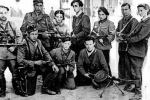 |
|
FEBRUARY 1943
2 February: The remaining 100,000 soldiers of the German 6th Army surrendered in Stalingrad. 16 February: Soviet troops re-conquered Kharkiv (Charkow). 18 February: Nazis arrested "White Rose" resistance leaders in München. 18 February: In Berlin Reichspropagandaminister Joseph Goebbels declared the "Total War". In early February 1943 Himmler visited Sobibor. The Fritz Schultz Factory in the Warsaw Ghetto was transferred to Trawniki. Amon Göth was nominated by SS- und Polizeiführer Scherner to command the Krakow-Plaszow forced labour camp. Greek Jews were ordered into ghettos. |
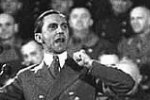 |
|
MARCH 1943
2 March: The first transport left the Netherlands for Sobibor. 2 March: The USSR refused the Polish Exile Government's demand for re-installing the former Polish-USSR border. 5 March: First Allied air raid on the Ruhrgebiet (Germany). 6 March: First transport from France to Sobibor. 13 March: Start of the final liquidation of the Krakow Ghetto. 13 March: Establishment of the "Ostindustrie GmbH (Osti)", a joint venture between the WVHA in Berlin and the SSPF Lublin, Globocnik. 13 March: Auschwitz: The first mass murder in Crematory II took place. On this day about 1.500 Jews from Ghetto B in Krakow were killed with Zyklon B gas. 20 March: Biggest convoy battle of the war. German submarines sank 21 Allied ships. 22 March: Crematory IV opened at Auschwitz-Birkenau. 31 March: Crematory II opened at Auschwitz-Birkenau. Chelmno: End of the first killing phase. Start of deportations of Jews from Greece to Auschwitz. Auschwitz: When the large crematories at Birkenau were put into operation in spring and summer 1943, the primitive and provisional gas chambers of "Bunker 1" were no longer necessary, and the building was demolished. |
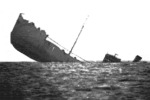 |
|
APRIL 1943
4 April: Crematory V opened at Auschwitz. 13 April: The bodies of 4,000 Polish officers were discovered at Katyn (near Smolensk). They had been killed by Soviet units in 1940. 14 April: Stalin's oldest son perished in the KZ Sachsenhausen. 19 April: Start of the final liquidation of the Warsaw Ghetto. The "Großaktion" ("Great Action") began. 30 April: The German Reichskommissar for the Netherlands Seyß-Inquart declared the state of emergency for the Netherlands. Closure of the T4 killing centre Bernburg. Jews were prohibited from living anywhere in the Netherlands, other than in Amsterdam, Westerbork, or Vught. |
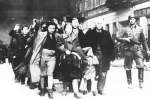 |
|
MAY 1943
3 May: Allied troops took Tunis. 5 May: By order of Himmler most Dutch Jews had to be deported by year's end. 13 May: The German Afrika-Corps surrendered. 16 May: Stroop announced that the "Großaktion" in the Warsaw Ghetto had been completed. 16 May: Stroop's idea to establish a KZ in Warsaw in order to remove the remainings of the ghetto was realized, and the construction of the KZ Warsaw began. 17 May: English "Dam-Buster" bombers destroyed the Eder- and Möhne dams in Germany. 22-24 May: German Großadmiral Dönitz suspended submarine operations in the North Atlantic. Most of the "rest-ghettos" were liquidated and the Jews who were still able to work were deported to concentration and work camps. |
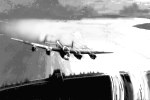 |
|
JUNE 1943
5 June: Deportation of 1,250 Dutch Jewish children below 16 years to Sobibor. 10 June: Start of combined Allied air raids on Germany. The Royal Air Force bombarded during the night, the U.S. Air Force during the day. 11 June: Himmler ordered the liquidation of all ghettos. 25 June: Crematory III opened at Auschwitz-Birkenau. 30 June: Sobibor: A transport of the last Jews from Belzec arrived. The "Sonderkommando 1005" units were ordered to open the mass graves in Poland, the Baltic States and the occupied territory of the former USSR. They finished their work in mid 1944. Czestochowa Ghetto: Jewish resistance fighters of ZOB (Zydowska Organizacja Bojowa) fought unsuccessfully against the Germans. |
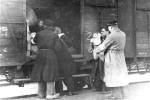 |
|
JULY 1943
5 July: Sobibor: Himmler ordered the addition of a munitions supply area (Camp IV). 5 July: Tank battle of Kursk. 10 July: Allied invasion of Sicily. 19 July: The construction of the KZ Warschau was finished. 19 July: Allied air raids on Rome. 20 July: Sobibor: The "Forest Command" (Waldkommando) revolted. 8 prisoners managed to escape, all others were shot. 25 July: Mussolini resigned. 24-28 July: Allied air raids on Hamburg ("Operation Gomorrha"). 30 July: Establishment of the French Exile Government in Algiers by General de Gaulle. |
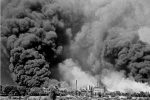 |
|
AUGUST 1943
1 August: German troops crossed the Italian border in order to occupy Northern and Central Italy. 2 August: Revolt in Treblinka. 16 August: Bialystok Ghetto uprising. 17 August: Allied air raids against Schweinfurt (German ball bearing factories). 18 August: The Heydrich Sonderkommando 1005 A, led by Blobel, started to exhume and burn the corpses at Babi Yar. 18 August: Deportations from the Bialystok Ghetto to Treblinka began and continued for 3 days. 21 August: Treblinka: The last victims were gassed. 24 August: Himmler was appointed Minister of the Interior. 29 August: The fall of the Danish government marked the end of official Danish collaboration. The Germans introduced a state of emergency and martial law. The remaining Danish Army was disarmed and the Royal Danish Navy scuttled itself. Nevertheless the Danish head civil servants managed to keep administration in Danish hands throughout the occupation. Closure of the T4 centre Sonnenstein. According to the statements by Jakob Sporrenberg, the first information about the planned "Aktion Erntefest" massacre was known already by end of August. |
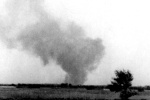 |
|
SEPTEMBER 1943
3 September: Allies landed in Italy. 8 September: Armistice between the Allies and Italy. 9 September: Armistice between the Allies and Hungary. 9-18 September: Battle of Salerno (Italy). 10 September: German troops occupied Rome. 11 September: Beginning of Jewish family transports from Terezin (Theresienstadt) to Auschwitz. 12 September: A German special command liberated the imprisoned Mussolini and brought him to Hitler. 18 September: Mussolini ordered via the radio the establishment of a Fascist regime in Italy, the "Republica Sociale Italiana". 22 September: Himmler ordered Globocnik to complete "Aktion Reinhard" until 31 December 1943. 29 September: The Netherlands: Round-up of the last Jews of Amsterdam. Globocnik left Poland for Trieste (Italy). The labour camp at Mogilev was liquidated. |
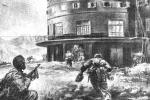 |
|
OCTOBER 1943
2 October: Failed action against the Jews in Denmark. Approximately 7,000 Jews safely reached Sweden by boat. 481 were deported to the Terezin Ghetto (Theresienstadt). 428 of them survived the war. 4 October: Himmler gave a notorious speech to the SS Group Leaders in Poznan ("Poznan Speech"), where he spoke about the extermination of the Jews. 13 October: The antifascist Italian Government declares war on Germany. 14 October: Sobibor uprising. 18 October: 1,000 Jewish inhabitants of Rome were deported to Auschwitz. 19 October: The Foreign Ministers of the USSR, U.S., and Great Britain met in Moscow. They decided to establish an international court to sentence Nazi crimes after the war. 20 October: Sobibor: Following the revolt in Treblinka in August 1943, and the dismantling of its facilities, the last prisoners and SS men arrived in Sobibor. 21 October: Final liquidation of the Minsk Ghetto. 25 October: Liquidation of the corpse-burning squad at Janowska began. They had cremated between 100,000 and 200,000 corpses. 27 October: The cremation of Maly Trostinec victims began. The former rice-mill at San Sabba (Trieste / Italy) was converted into a Polizeihaftlager (KZ), commanded by Wirth. |
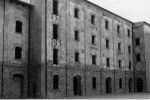 |
|
NOVEMBER 1943
3 November: "Aktion Erntefest". The final event of "Aktion Reinhard", personally prepared by Himmler. The Trawniki camp was liquidated. 3 November: The Old Airfield Camp in Lublin was closed in the course of the Aktion Erntefest. On this day all prisoners were brought to Majdanek for execution. 4 November: The Poniatowa forced labour camp and small camps in Pulawy county were liquidated in course of the "Aktion Erntefest". 6 November: The Red Army liberated Kyiv and the Babi Yar area. 8 November: Hitler's final radio speech. 13-14 November: The camp on Janowska Street in Lviv was liquidated. 17 November: Treblinka: The last transport departed from the camp, carrying equipment. 18 November: Large British air raid on Berlin. 23 November: Sobibor: Wagner announced the execution of the last remaining 30 Jews. 28 November-1 December: Roosevelt, Churchill, and Stalin met in Teheran. They created main structures for a European order for the post-war time. 29 November: Tito became leader of the "National Committee for the Liberation of Yugoslavia", the Yugoslavian partisan movement against the German troops. Wirth temporarily returned to Lublin, where he was involved in the final destruction of the slave labour camps in the Lublin district, the "Aktion Erntefest". "Aktion Reinhard" ended. |
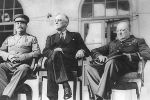 |
|
DECEMBER 1943
1 December: Mussolini ordered the arresting of all Italian Jews and their deportation to KZs. 2 December: The first transport of Jews from Wien arrived at Auschwitz. 4 December: In the Pacific 6 U.S. carriers and 9 cruisers attacked Kwajalein, and the Marshall Islands. 16 December: The Auschwitz chief surgeon reported 106 castration operations on prisoners. 24 December: Eisenhower was appointed the Supreme Commander of Allied Expeditionary Forces. |
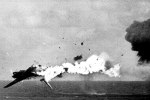 |
© ARC 2006